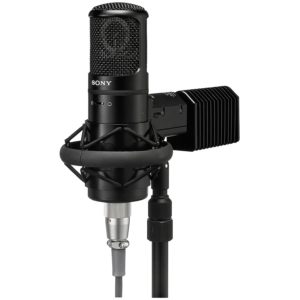- in Gear , Microphones by Bobby Owsinski
Unusual Microphone Choices Of The Masters
 You’d think that all the engineer and producer greats would use the same vintage microphones that have become just as famous as they are, but that’s not the case. U47’s, C-12’s, U67’s – they all have a place in the hall of fame for good reason. That said, it’s interesting that some of the greats preferred other mics that are less prominent in our consciousness. Here are some unusual microphone choices by some of the great engineers and producers.
You’d think that all the engineer and producer greats would use the same vintage microphones that have become just as famous as they are, but that’s not the case. U47’s, C-12’s, U67’s – they all have a place in the hall of fame for good reason. That said, it’s interesting that some of the greats preferred other mics that are less prominent in our consciousness. Here are some unusual microphone choices by some of the great engineers and producers.
Shure SM7 – This was one of Bruce Swedien and producer Quincy Jones‘ favorites and used on every Michael Jackson vocal, combined with a Neve 1084 and UREI 1176. The SM7 is actually a SM57 on steroids, with an extended and smooth frequency response, but a fairly low output (try a Cloudlifter to give it a boost). It’s also the mic I chose for my Inner Circle Podcast (for what it’s worth).
Sony C-800G – Even though this was Sony’s flagship microphone, it was sort of forgotten until Dr. Dre began to use it both on his records and the ones he produced. Since then, the C-800G has become the preferred mic of for hip hop vocals everywhere when feed into an Avalon 737-SP channel strip. It uses a 6AU6 tube (very unusual for mic use, but easy to find), and a unique Peltier-based cooling system (the fins on the back). By the way, if the mic isn’t used in a 90 degree angle, the cooling doesn’t work properly and frequency response changes.
Telefunken U48 – The U-47 is the mic that got all the love, but the U48 got all the work at Abbey Road Studios back in the day. Producer George Martin favored the mic on all of the Beatles records that he worked on. How does it differ from a U47? The U48 is switchable between cardioid and figure 8, while the U47 is switchable between cardioid and omni.
Shure SM57 – While most engineers find the 57 to be a go-to workhorse on snare and guitar amps, producer Rick Rubin has other uses for it as his “magic mic” on many of his projects with the Red Hot Chili Peppers, Johnny Cash and Tom Petty. Rubin likes to use it in places where others wouldn’t dream of placing it, like kick and vocals.
The point is that just because a mic is “vintage” or is expensive, it doesn’t mean it’s the right one for the job. Use your ears and not your eyes when recording and don’t worry about unusual microphone choices, because a lot of the time, the gear has less to do with the sound than you think.
Follow the link for an interesting take on the subject from Sweetwater (where the idea for this post came from).
